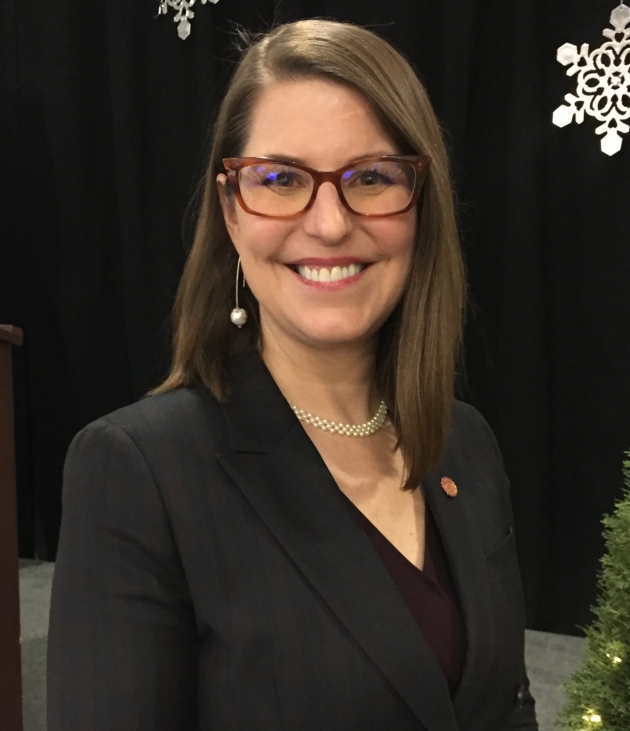
Lianne Lefsrud, an assistant professor in the Department of Chemical and Materials Engineering.
(Edmonton) The value of STEM fields (science, technology, engineering and math) has never been greater, for both individuals and society at large. And studies show that the impact of these fields can be increased dramatically through diversity and inclusiveness.
"Diversity creates a competitive advantage," said Lianne Lefsrud, an assistant professor in the Department of Chemical and Materials Engineering who recently presented the topic of "The Gender Diversity Challenge in Engineering and Science" as part of U of A Alumni Relations Educated Luncheon series.
"Studies show that employees of firms with high diversity are 45 per cent more likely to report a growth in market share over the previous year, and 70 per cent are more likely to report they have captured a new market," she said.
Diversity also increases research impact. Ethnically diverse author groups resulted in an impact gain of 10.6 per cent on papers, she said.
Lefsrud added: "The researchers are more likely to succeed. They are more likely to get tenure. If they're trained under mentors with a different background than them, they are able to incorporate that background to be able to think in a very sort of incorporated way."
Lefsrud cited research demonstrating that gender-diverse companies are shown to be more profitable. Having two to three women on a board of directors results in an 84-per-cent increase in sales and a 60-per-cent increase on a return in invested capital, versus boards with no female representation.
The problem is that creating and maintaining a diverse corporate culture isn't as easy as it seems.
"Diversity is a basis for opportunity and innovation," said Lefsrud. "But it can be challenging to be diverse and inclusive because we hold unconscious biases."
People create heuristic shortcuts to makes sense of the world. These shortcuts lead to unconscious biases in our assessments of other people.
"We sort people into groups - those like us and those not like us," Lefsrud explained. "I'm drawn to people similar to myself in terms of age, gender and more, because I know myself so I apply that thinking to people like me.
"But for people who aren't like me, I need to start making assumptions because I don't know them. This is why diversity is hard - we're all biased."
According to the Canadian Human Rights Act, diversity includes everything from race, nationality, ethnic origin, skin colour, age, gender, and sexual orientation.
"Diversity can also be invisible things that are acquired, such as education and experience," Lefsrud said. "So all together diversity includes traits I was born with and what I acquired throughout my life."
She makes an important point about diversity versus inclusion and how the two are not the same.
"Diversity is a great starting point. It's the complement of individuals in your organization," she explained. "But inclusion is making sure they feel safe enough to being their whole self to their job and don't need to pretend to be someone else.
"You can think about diversity as being invited to the party, and inclusion as being asked to dance."
By overcoming our inherent biases and being inclusive (see sidebar for some of Lefsrud's recommendations), we can help STEM fields and the people who work in it reach even greater heights.